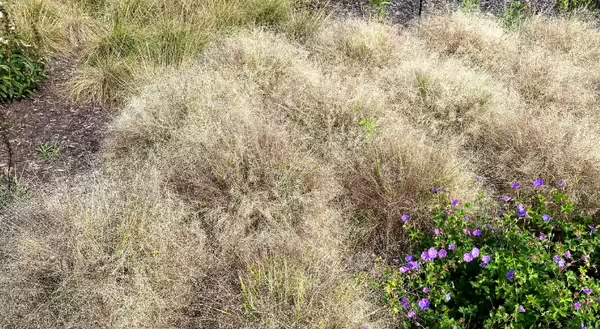
I am making plans to add some new garden beds in my backyard. Starting with a blank slate can be daunting, but there are certain questions I ask myself when considering if a plant makes the cut to go in the garden. Besides matching the growing condition requirements of the plants to the conditions of my yard, I try to include native plants in my garden due to their many ecological benefits. I like to have a mix of trees, shrubs, flowering plants with bloom times in spring, summer, and fall, groundcovers, and other greenery. It might be easy to see the value in trees and shrubs that provide shade and wildlife food and habitat, value in flowers that provide larval and adult food and habitat for pollinators, and even groundcover, that keeps soil in place. But what about the greenery, namely grasses? Are they just filler? What benefits do grasses provide?
Aesthetics
I think many of us start with aesthetics when it comes to adding plants to our landscape. Grasses (and sedges) should not be overlooked due to their lack of showy flowers or their mostly green color. Grasses are perfect for connecting gaps between showier flowering species. I am personally not a fan of specimen plants spaced 5 feet apart with mulch in between – I much prefer to create more of a living landscape that mimics a prairie or a forest floor, with plants cascading and flowing into one another. Grasses are up to the task!
That being said, their standalone beauty should not be overlooked either! Grasses can have red, purple, and blueish hues in their stems and leaves, and sometimes their flowers can be yellow, red, or orange. Some also have brilliant fall color.
When I’m looking for a filler, I use Prairie Dropseed. It looks great on its own but also fills in gaps nicely. I also planted River Oats around my existing gladiolus in my garden since I don’t care for the look of just the gladiolus leaves. By the time the blooms fade, the River Oats is tall enough to almost cover the gladiolus, and it will turn a golden color in the fall.
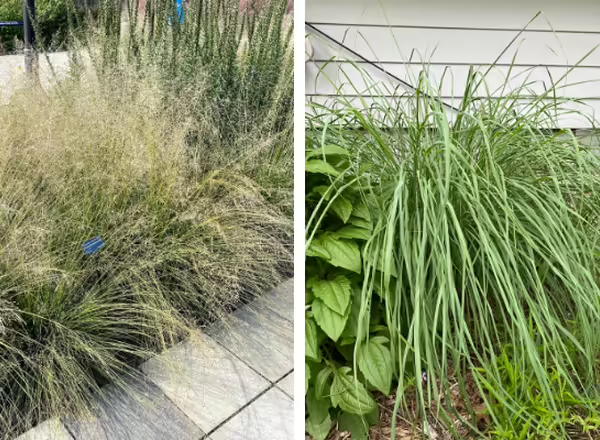
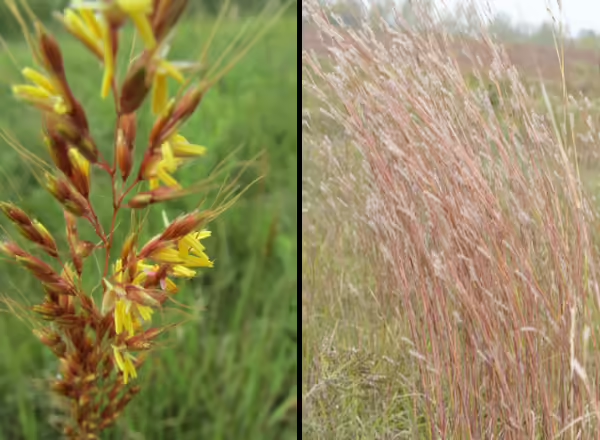
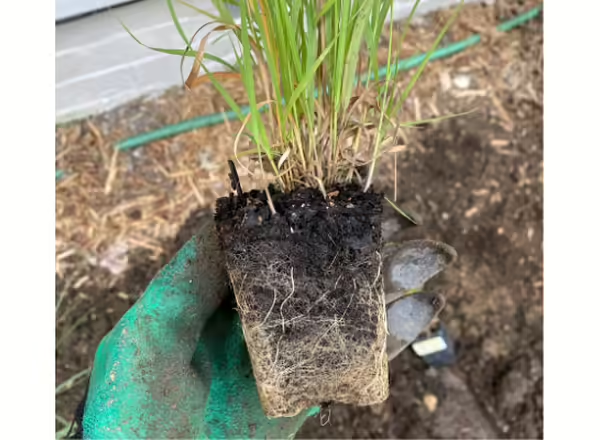
Belowground benefits
When thinking about gardening, it’s important to think about the longevity of our system. Building and maintaining good quality soil should be a top priority. Native grasses can have extensive root systems that improve soil structure and stability, while also allowing the grasses to better withstand periods of drought.
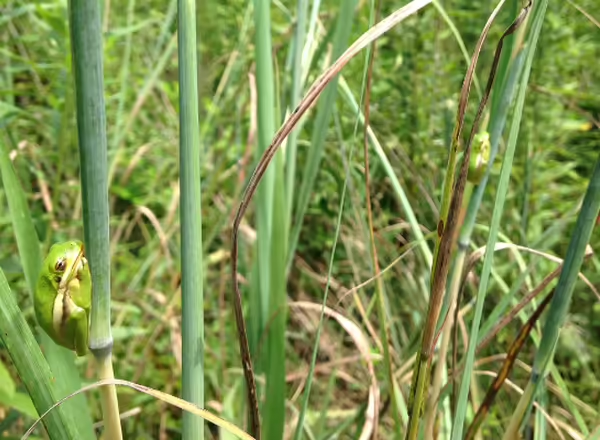
Wildlife benefits
Do pollinators need grasses? When thinking about pollinators, many of us choose showy flowers to provide a source of pollen and nectar. But there are other ways that pollinators can use our gardens – bees can nest underground or in plant stems (including some grasses) and the larvae of some butterflies, like the skipper group, eat the leaves of grasses. Thinking about wildlife in general, insects, birds, small mammals, and even reptiles like skinks and snakes can take shelter in our gardens. Adding in grasses (especially in those gaps between plants) can provide a myriad of small habitat niches for lots of different critters to use.
Getting started
There are many different grasses and sedges that are available to add to your garden. But how do you choose? The Illinois Pollinators website has information on 15 species of Illinois native grasses and sedges that you can browse. The website includes information on how the plants grow, tips for planting success in your garden, and how the plant is used by wildlife.
Never miss a new post! Sign up for our email list.
ABOUT THE AUTHOR: Erin Garrett is a Natural Resources, Environment, and Energy Educator for University of Illinois Extension serving Alexander, Johnson, Massac, Pulaski, and Union counties. Erin develops and delivers high impact programming to adults and youth to help them develop an appreciation for natural resources and to empower them to make small changes to positively impact the environment. Erin’s programming focuses on why homeowners should consider choosing native plants, how to support native pollinators, how to identify grasses, how to identify and manage invasive species, and developing an appreciation for prairie ecosystems.
ABOUT THE BLOG: Grasses at a Glance dives into grass identification, focusing on tips and tricks that make grass identification possible. Get information about native and non-native species, how to tell look-alikes apart, and which grasses you can find in Illinois.